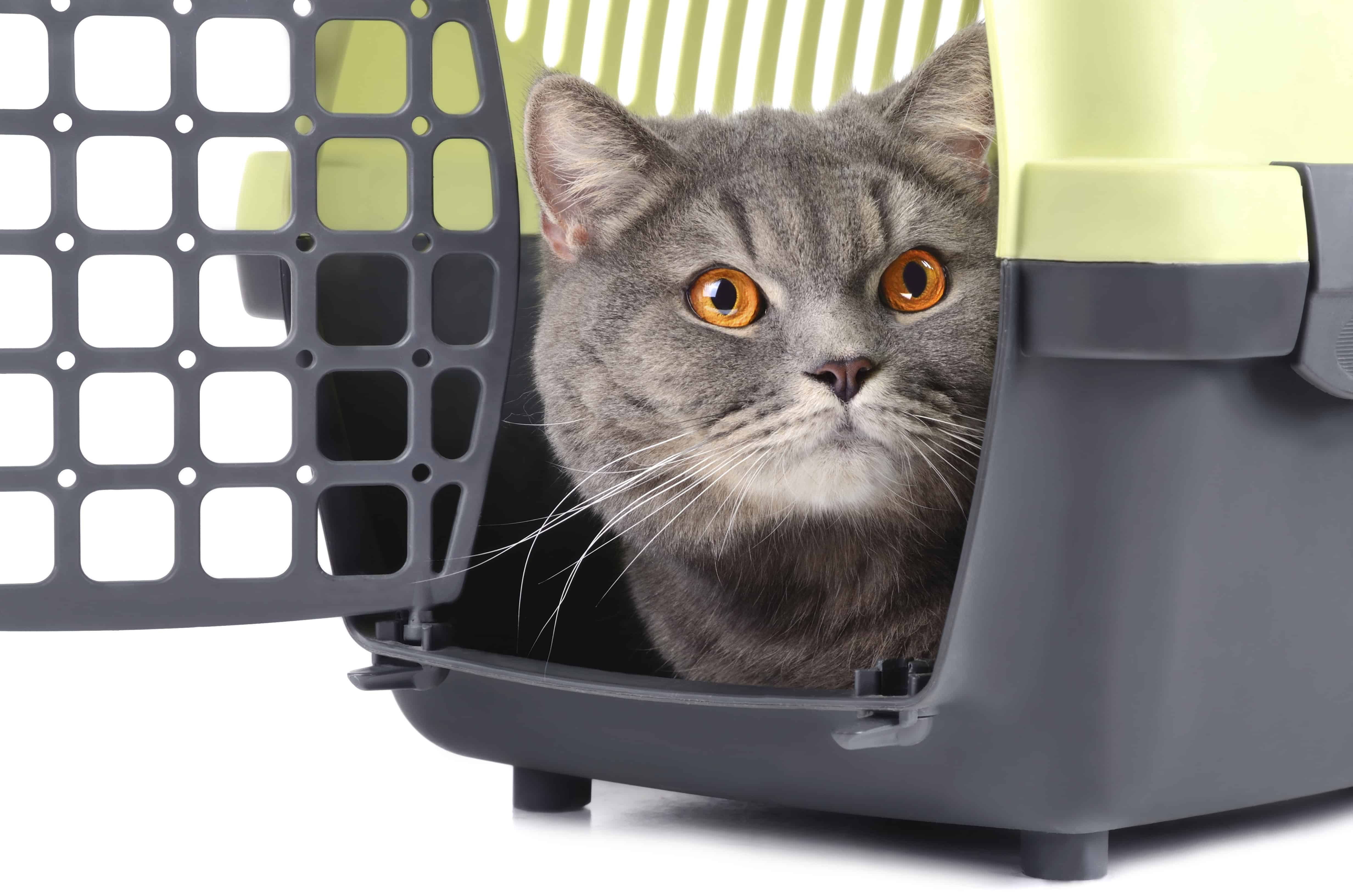Crate Training a Cat: Yes, It’s Possible!
 Let’s face it; when most of us think about crate training, we associate the practice with dogs. But cats? Not so much.
Let’s face it; when most of us think about crate training, we associate the practice with dogs. But cats? Not so much.
Contrary to what you might think, crate training cats is a real and doable thing. Not only that, but doing so is in your cat’s best interest. Much like dogs, crate training cats can help you and your kitty avoid problem behaviors. By giving your cat a space of his or her own, you can instill a sense of safety and personal space for your cat. This will help keep him or her safe and sound when it’s needed the most.
Why Crate Training a Cat Is a Good Idea
If you have ever attempted to transport a fearful cat to a veterinary appointment, you’ve likely experienced the impossible acrobatics of your cat’s avoidance. Most cats simply do not saunter into their crates with ease. This fear of being confined and transported can create problems when your pet needs to see a vet or in the event of an emergency situation when a quick evacuation is necessary.
Other situations that have been improved with kitty crate training include behavioral issues, such as problems with litter box training or anxiety (crates can provide a sense of safety or territory). Some pet owners have also noticed a marked difference in their cats’ sense of safety through the addition of a cozy crate (i.e. mini home) of their own.
But Where to Begin?
First, you’ll need a crate. Crates range in size and material – everything from sturdy canvas carriers to large metal crates. We suggest finding a crate that provides some privacy and is spacious enough to allow your cat to move or change positions, but not so large to prohibit a feeling of security or to be uncomfortably jostled about during transport.
Once you find the right carrier, line it with blankets or towels and cover the carrier with a large throw or blanket to create darkness. It’s best to place the carrier in an area your cat frequents, but out of the way of foot traffic and noise.
Allow your cat to investigate the crate on his own. Chances are, he may jump up and nap on the top or perhaps investigate the inside of the crate over the first few weeks. At this point, you may want to add treats or toys inside the crate to pique his interest, or perhaps even move his food bowl inside the crate.
By rewarding your kitty with interesting edibles and catnip toys, he will begin to associate the crate with positives and start to view the crate as his personal space.
Some Tricks of the Trade for the Stubborn Cat
Of course, there are some cats who – no matter what the incentive – simply will not learn to love that crate. Continue with the steps listed above, and use some of the following cat crate tips to help warm your stubborn feline to the new crate.
- For cats with the three part crate, you may wish to break the crate down into its bottom platform, then gradually add the walls and door over time.
- Some cats are soothed by Feliway, a synthetic pheromone that helps cats feel secure – try spraying some inside and around the crate.
- Continue to leave treats in your cat’s crate every morning, or an occasional tasty dish of tuna.
- Allow several weeks for this adjustment time before you attempt to close the crate door or carry your feline in the crate.
- Once your cat is comfortable in the crate, help him adjust to movement by carrying him around the house.
- Slowly add 10-15 minutes car rides or short trips to visit a friend before the upcoming lengthier veterinary appointment or other more laborious transportation needs comes up (such as moving).
Crate training your cat is possible, but it requires a little patience, ingenuity, cat savvy, and treats…lots of (healthy) treats. In time, your cat will learn to enjoy his new little crate-home and you will benefit from the ease of transporting your cat whenever the need arises.
Good luck!

